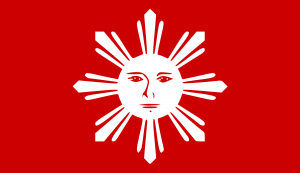Language/Tagalog/Vocabulary/Directions-and-Transportation
As a Tagalog language teacher, I believe that understanding how to ask for and give directions is essential when learning the language. In this lesson, I will teach you some basic Tagalog vocabulary related to directions and transportation.
Vocabulary
Here are some basic Tagalog words and phrases that you can use when asking for directions or when describing transportation options:
| Tagalog | Pronunciation | English Translation |
|---|---|---|
| saan? | sa-AN? | where? |
| doon | do-ON | there |
| kanto | KAN-to | corner |
| kanan | ka-NAN | right |
| kaliwa | ka-LI-wa | left |
| daan | DA-an | street, road |
| punta | PUN-ta | go to |
| sakay | sa-KAY | ride |
| jeepney | JEEP-nee | jeepney |
| tricycle | tri-SEE-kul | tricycle |
Note: In Tagalog, the words "saan" and "doon" are commonly used when asking for directions. "Saan" means "where," while "doon" means "there."
Here are sample sentences that you can use when giving directions:
- Puntahan mo ang simbahan. (Go to the church.)
- Kumanan ka sa kanto. (Turn right at the corner.)
- Lumiko ka sa kaliwa. (Turn left.)
- Itanong mo sa tsuper kung saan ka bababa. (Ask the driver where to get off.)
- Sakay ka ng tricycle papuntang palengke. (Ride a tricycle going to the market.)
And here are sample sentences that you can use when describing transportation:
- Mag-jeepney na lang tayo papunta sa mall. (Let's ride a jeepney going to the mall.)
- Mas mabilis kung mag-taxi tayo. (It's faster if we ride a taxi.)
- Madaming tricycle sa kanto. (There are a lot of tricycles at the corner.)
Learning these words and phrases will make it easier for you to communicate when asking for and giving directions, as well as when describing different modes of transportation in Tagalog.
Additional Tips
Aside from the vocabulary provided, there are some things to keep in mind when asking for and giving directions in the Philippines. Here are some tips:
- Don't be afraid to ask for directions. Filipinos are generally friendly and helpful, so they will be happy to assist you in finding your way.
- Landmarks are important. When asking for directions, it's helpful to point out landmarks as a reference point. For example, you can say, "Saan po ang simbahan? (Where is the church?) Malapit po ba ito sa Jollibee? (Is it near Jollibee?)"
- Traffic can be heavy. When traveling in the Philippines, especially in urban areas, it's important to factor in traffic when estimating travel time. It's also best to plan your route ahead of time.
- Be prepared to walk. Not all destinations are accessible by motorized transportation, so be ready to walk, especially in rural areas or smaller towns.
By keeping these tips in mind and practicing the vocabulary provided, you'll be able to navigate your way around the Philippines with ease.
Related Lessons
- Greetings and Polite Expressions
- How to Say Hello and Greetings
- Education and Learning
- Numbers and Counting
- Colors
- Days, Months, and Seasons
- Education
- Food
- Weather and Natural Phenomena

